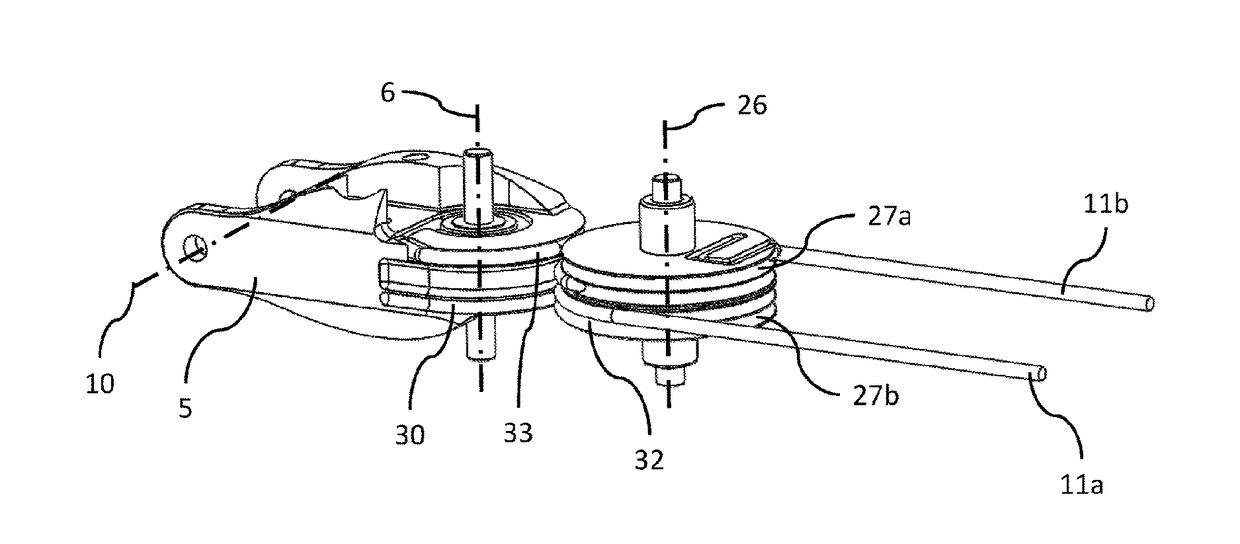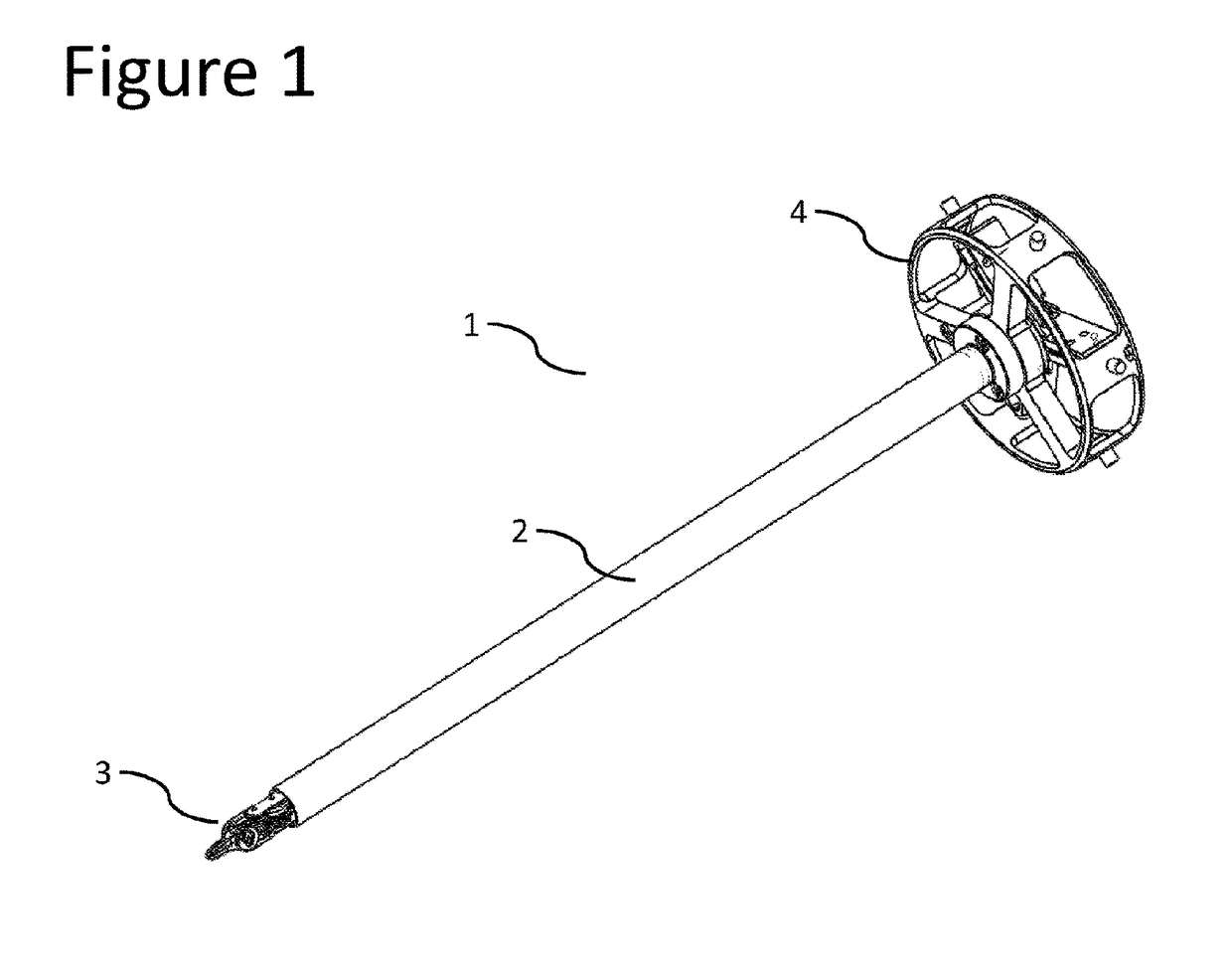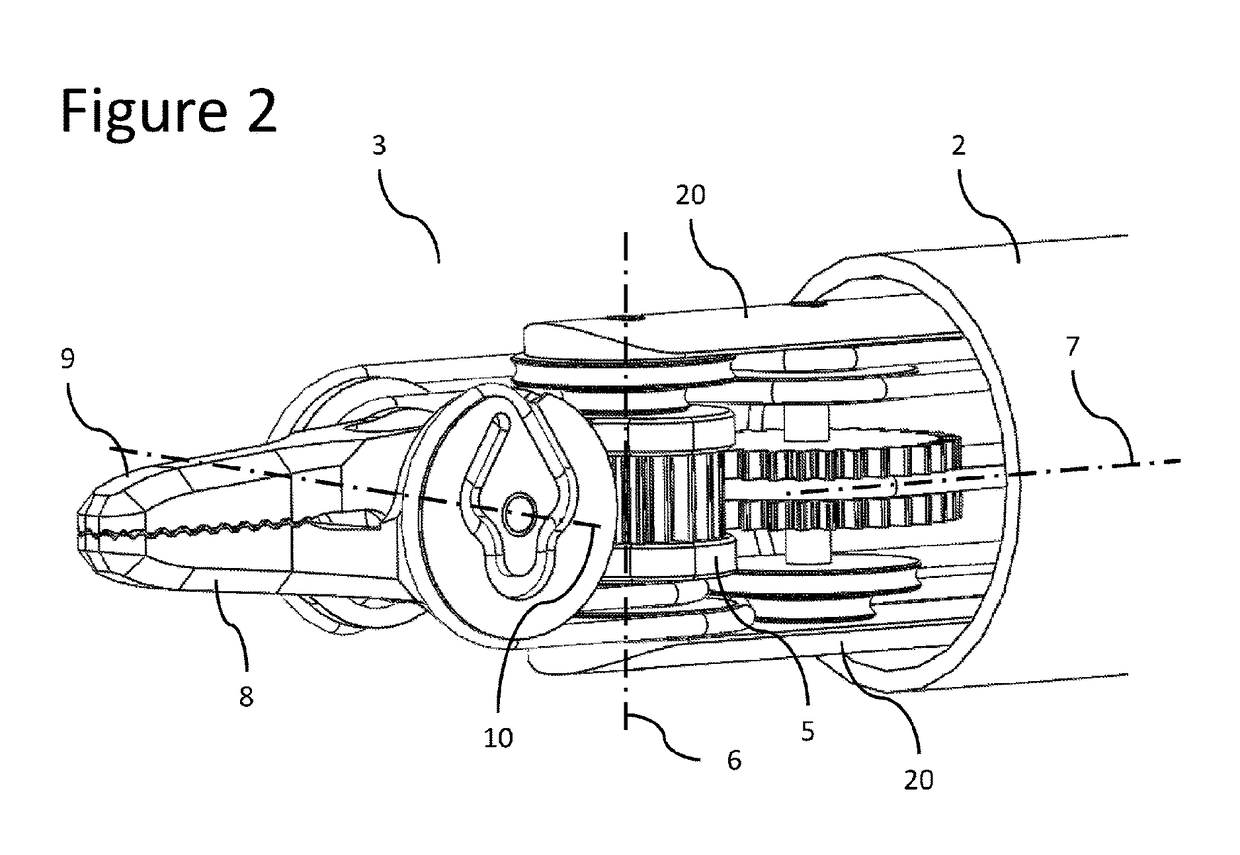Surgical instrument with articulated end-effector
a surgical instrument and end-effector technology, applied in the field of remote actuation mechanical systems, can solve the problems of inability to use laparoscopic procedures, long recovery periods in inpatient settings, and substantial blood loss, and achieve the effects of reducing the wear of the rope, and reducing the risk of infection
- Summary
- Abstract
- Description
- Claims
- Application Information
AI Technical Summary
Benefits of technology
Problems solved by technology
Method used
Image
Examples
Embodiment Construction
[0033]A surgical instrument 1 for minimally invasive surgical procedures, with an articulated end-effector constructed in accordance with an embodiment of the present invention, is described herein, and is seen generally in FIG. 1. This instrument 1 includes a main shaft 2, a distal end-effector 3 and a proximal hub 4. Referring to FIG. 2, the end-effector 3 is connected to the distal extremity of the main shaft 20 by a proximal joint, which allows the rotation of the proximal end-effector link 5 by the proximal axis 6 in such a manner that the orientation of the proximal end-effector link 5 with respect to the main shaft axis 7 can be changed.
[0034]Referring to FIG. 2, the distal end-effector links 8, 9 are rotatably connected to the proximal end-effector link 5 by two distal joints, having coincident axes of rotation, which are represented by the distal axis 10. This distal axis 10 is substantially perpendicular and non-intersecting with the proximal axis 6 and substantially inter...
PUM
 Login to View More
Login to View More Abstract
Description
Claims
Application Information
 Login to View More
Login to View More - R&D
- Intellectual Property
- Life Sciences
- Materials
- Tech Scout
- Unparalleled Data Quality
- Higher Quality Content
- 60% Fewer Hallucinations
Browse by: Latest US Patents, China's latest patents, Technical Efficacy Thesaurus, Application Domain, Technology Topic, Popular Technical Reports.
© 2025 PatSnap. All rights reserved.Legal|Privacy policy|Modern Slavery Act Transparency Statement|Sitemap|About US| Contact US: help@patsnap.com



